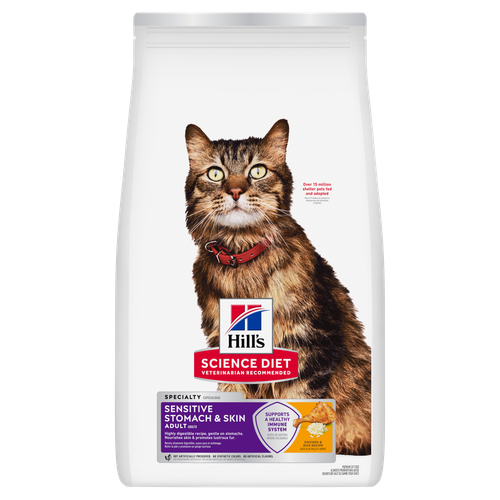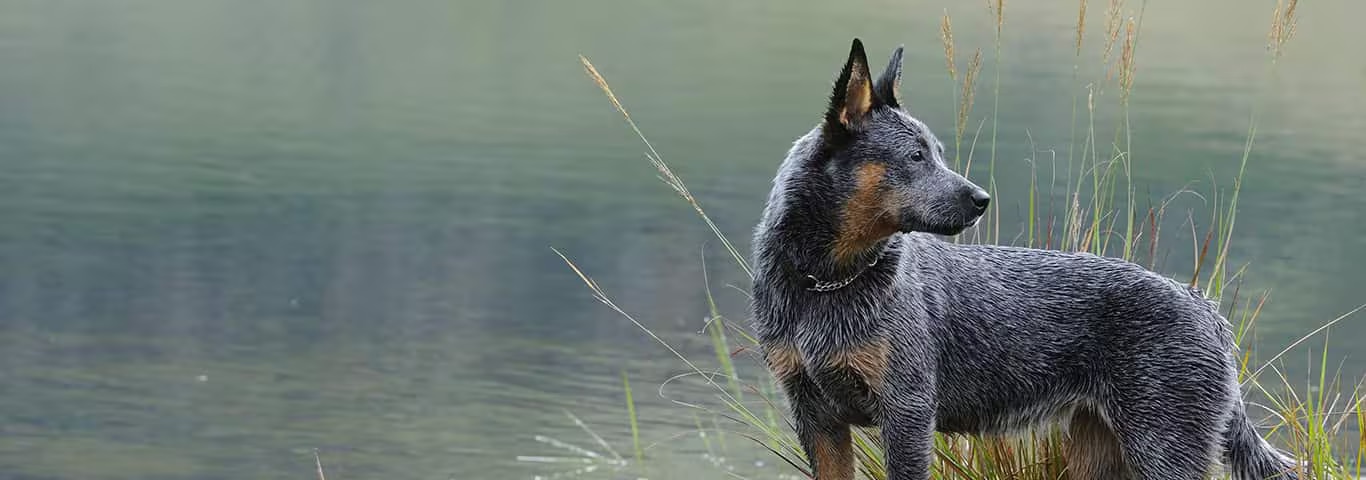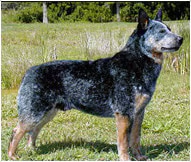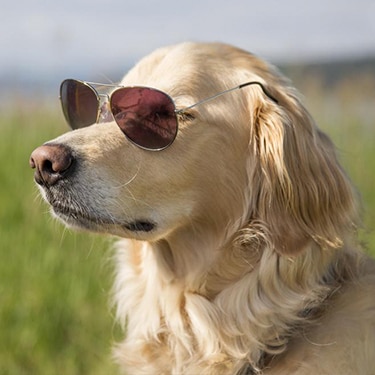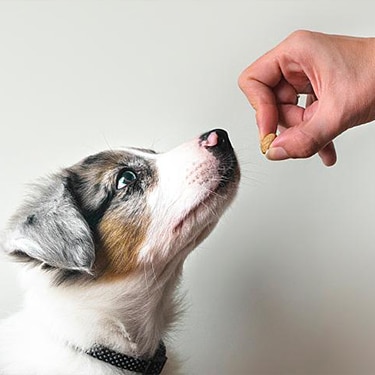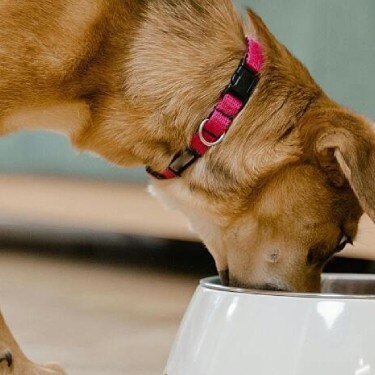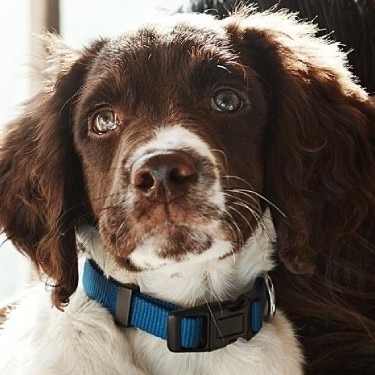A strong head and slightly curved, broad skull herald the dingo ancestry. Cheeks are muscular, and the muzzle and jaws powerful in appearance. Their medium-sized, pricked ears, suspicious glint and strong teeth give the cattle dog a slightly intimidating demeanor.
The Cattle Dog's neck is exceptionally muscular and somewhat stocky. The shoulders are broad and the chest deep. The tail is set low and hangs to the level of the hocks. Their solid frame is 17 to 20 inches at the withers, the males slightly larger than the females.
The dual coat consists of an outer protective layer of moderately short, straight, medium-texture hairs, and a short, dense layer below. Cattle dogs come in two different color schemes: red speckle and blue. "Blue heelers," as the latter variety is sometimes called, are blue or blue mottled, with black, blue or tan markings on the head; while the undercoat is often tan. The red variety has an even, red speckle, (from its Dalmatian genes), with or without darker red markings on the head.
Bred to perform demanding tasks, the Australian cattle dog is extremely alert, intelligent, watchful and courageous. Highly trustworthy and reliable, they have a tenacious sense of duty. Loyal to their owners and wary of strangers, they are fiercely protective when used as a watch dog, although they are not barkers. The Australian cattle dog tends to be aggressive with other dogs and may display dominance and herding behaviors toward children.
These dogs are highly energetic and require ample opportunities for exercise. Certainly not suited to apartment dwelling, Australian cattle dogs thrive when they have jobs to do. They tend to become destructive when bored.
Australian cattle dogs are suited to any climate. They shed once or twice yearly. Weekly brushing is advised to keep the coat healthy.
The Australian cattle dog was a true adventure in creation. The breed as we know them today is the culmination of much experimentation to create the ideal dog for herding fractious beef cattle in Australia. The need for a suitable cattle dog arose in the early 1800s when settlers began spreading westward from Sydney to utilize the vast grazing lands. Here, land holdings were often hundreds, even thousands, of square miles of unfenced land. For the English cattle dogs that were used at the time for herding, the high temperatures, rough terrain and long herding distances were too much to handle. Plus, their trait of barking and heading, which is desirable for working sheep and quiet cattle, made the wild stock stampede.
Much genetic trial and error followed. Eventually, a winning formula was discovered. Smooth-haired, blue merle highland collies, imported from Scotland, were crossed with the native wild dingo dog to produce silent workers known as Hall's Heelers. The heelers were crossed with imported Dalmatians in order to instill the love of horses and loyalty to the master. These speckled Bagust dogs (from brothers Jack and Henry Bagust), were crossed with black and tan kelpies, sheepdogs valued for their working stamina. The result was a compact dog, similar in build to the dingo, but thicker set. Both blue and red varieties were produced, the former gaining greater popularity.
Their working endurance, quiet herding style and obedient devotion to their owners made these dogs highly sought by property owners and drovers. By the late 1800s, the breed (known initially as the Australian heeler and later as the Australian cattle dog) was widely recognized and standardized in Australia. The Australian cattle dog was accepted for American Kennel Club (AKC) registration in 1980.
Adopt a pet. Change a life.
Are you prepared to adopt a pet? Use these tools to make sure you are ready for the commitment.
Adopt a pet. Change a life.
Are you prepared to adopt a pet? Use these tools to make sure you are ready for the commitment.





